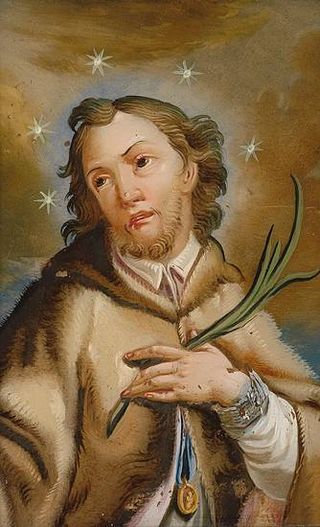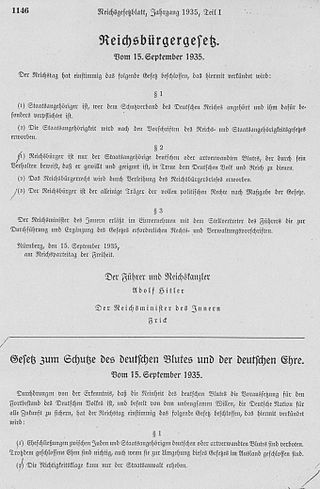
A succubus is a demon or supernatural entity in folklore, in female form, that appears in dreams to seduce men, usually through sexual activity. According to religious tradition, a succubus needs semen to survive; repeated sexual activity with a succubus will result in a bond being formed between the succubus and the man; and a succubus cannot drain or harm the man with whom she is having intercourse. In modern representations, a succubus is often depicted as a beautiful seductress or enchantress, rather than as demonic or frightening. The male counterpart to the succubus is the incubus.

Free love is a social movement that accepts all forms of love. The movement's initial goal was to separate the state from sexual and romantic matters such as marriage, birth control, and adultery. It stated that such issues were the concern of the people involved and no one else. The movement began around the 19th century, and was advanced by hippies during the Sixties.

Pierre de Bourdeille, called the seigneur et abbé de Brantôme, was a French historian, soldier and biographer.

Maria Monk was a Canadian woman whose book Awful Disclosures of Maria Monk, or, The Hidden Secrets of a Nun’s Life in a Convent Exposed (1836) claimed to expose systematic sexual abuse of nuns and infanticide of the resulting children by Catholic priests in her convent in Montreal. The book is considered by scholars to be an anti-Catholic hoax.

The Monk: A Romance is a Gothic novel by Matthew Gregory Lewis, published in 1796. A quickly written book from early in Lewis's career, it was published before he turned twenty. It is a prime example of the type of Gothic that specialises in the aspect of horror. Its convoluted and scandalous plot has made it one of the most important Gothic novels of its time, often imitated and adapted for the stage and the screen.

John of Nepomuk was the saint of Bohemia who was drowned in the Vltava river at the behest of Wenceslaus IV of Bohemia. Later accounts state that he was the confessor of the queen of Bohemia and refused to divulge the secrets of the confessional. On the basis of this account, John of Nepomuk is considered the first martyr of the Seal of the Confessional, a patron against calumnies and, because of the manner of his death, a protector from floods and drowning.

The Dream of the Fisherman's Wife, also known as Girl Diver and Octopi, Diver and Two Octopi, etc., is a woodblock-printed design by the Japanese artist Hokusai. It is included in Kinoe no Komatsu, a three-volume book of shunga erotica first published in 1814, and has become Hokusai's most famous shunga design. Playing with themes popular in Japanese art, it depicts a young ama diver entwined sexually with a pair of octopuses.

Incidents in the Life of a Slave Girl, written by herself is an autobiography by Harriet Jacobs, a mother and fugitive slave, published in 1861 by L. Maria Child, who edited the book for its author. Jacobs used the pseudonym Linda Brent. The book documents Jacobs's life as a slave and how she gained freedom for herself and for her children. Jacobs contributed to the genre of slave narrative by using the techniques of sentimental novels "to address race and gender issues." She explores the struggles and sexual abuse that female slaves faced as well as their efforts to practice motherhood and protect their children when their children might be sold away.

Clericalism is the application of the formal, church-based, leadership or opinion of ordained clergy in matters of either the church or broader political and sociocultural import.

Margaret of Austria was Queen of Spain and Portugal by her marriage to King Philip III & II.

John Melchior Bosco, SDB, popularly known as Don Bosco, was an Italian Catholic priest, educator, writer, and saint of the 19th century. While working in Turin, where the population suffered many of the ill effects of industrialization and urbanization, he dedicated his life to the betterment and education of street children, juvenile delinquents, and other disadvantaged youth. He developed teaching methods based on love rather than punishment, a method that became known as the Salesian Preventive System.

Rassenschande or Blutschande was an anti-miscegenation concept in Nazi German racial policy, pertaining to sexual relations between Aryans and non-Aryans. It was put into practice by policies like the Aryan certificate requirement, and later by anti-miscegenation laws such as the Nuremberg Laws, adopted unanimously by the Reichstag on 15 September 1935. Initially, these laws referred predominantly to relations between ethnic Germans and non-Aryans, regardless of citizenship. In the early stages the culprits were targeted informally; later, they were punished systematically and legally.
Venus in the Cloister or The Nun in her Smock, known in the original French as Vénus dans le cloître, ou la Religieuse en chemise (1683) is a work of erotic fiction by the Abbé du Prat, which is a pseudonym for an unknown author. Candidates for whom this might be include Jean Barrin and François de Chavigny de La Bretonnière.

Joseph Cafasso was an Italian Catholic priest who was a significant social reformer in Turin. He was one of the so-called "Social Saints" who emerged during that particular era. He is known as the "Priest of the Gallows" due to his extensive work with those prisoners who were condemned to death. But he was also known for his excessive mortifications despite his frail constitution: he neglected certain foods and conditions to remain as frugal and basic as possible unless a doctor ordered otherwise.
Priest–penitent privilege in France and the western portion of Europe received public recognition at a very early date owing to the perceived sacredness of the Seal of the Confessional.
Ecclesiastical prisons were penal institutions maintained by the Catholic Church. At various times, they were used for the incarceration both of clergy accused of various crimes, and of laity accused of specifically ecclesiastical crimes; prisoners were sometimes held in custody while awaiting trial, sometimes as part of an imposed sentence. The use of ecclesiastical prisons began as early as the third or fourth century AD, and remained common through the early modern era.

The account of the beheading of Holofernes by Judith is given in the deuterocanonical Book of Judith, and is the subject of many paintings and sculptures from the Renaissance and Baroque periods. In the story, Judith, a beautiful widow, is able to enter the tent of Holofernes because of his desire for her. Holofernes was an Assyrian general who was about to destroy Judith's home, the city of Bethulia. Overcome with drink, he passes out and is decapitated by Judith; his head is taken away in a basket.
The Catholic Church has been criticised in fiction, such as literature, film and television. Polemics have also been written on the Church and its practices. Some examples are the anti-Catholic stereotypes that filled Gothic fiction of Anglican England, the films of Luis Buñuel who took issue with the Church in Spain, the humor of some US television pundits like Rosie O'Donnell, and the rhetoric of some fundamentalist preachers.

Desert Mothers is a neologism, coined in feminist theology as an analogy to Desert Fathers, for the ammas or female Christian ascetics living in the desert of Egypt, Palestine, and Syria in the 4th and 5th centuries AD. They typically lived in the monastic communities that began forming during that time, though sometimes they lived as hermits. Monastic communities acted collectively with limited outside relations with lay people. Some ascetics chose to venture into isolated locations to restrict relations with others, deepen spiritual connection, and other ascetic purposes. Other women from that era who influenced the early ascetic or monastic tradition while living outside the desert are also described as Desert Mothers.
Reasons humbly offer'd for a Law to enact the Castration of Popish Ecclesiastics is an anonymous anti-Catholic quarto pamphlet published in London in 1700. The work has been tentatively attributed to Daniel Defoe.















